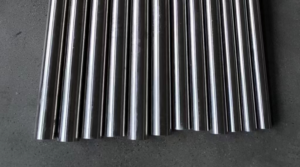Among many high-speed steel categories, tungsten-based high-speed steel and tungsten-molybdenum-based high-speed steel are the two most common steel types. Although both have the characteristics of high-speed steel, they are obviously different in many aspects. So, tungsten-based high-speed steel vs tungsten-molybdenum-based high-speed steel, what’s the difference? In this article, we will try to answer this question in detail.

Tungsten-based high-speed steel vs tungsten-molybdenum-based high-speed steel, what’s the difference?
First of all, in terms of chemical composition, tungsten-based high-speed steel is mainly composed of tungsten element. Generally, the tungsten content is about 18%, and it also contains some chromium, vanadium and other elements. The main alloy elements of tungsten-molybdenum high-speed steel are tungsten and molybdenum. In addition to the main tungsten element, it also contains about 5% to 10% molybdenum element.
In terms of performance, because tungsten-molybdenum high-speed steel has higher red hardness and wear resistance, it is more suitable for use in working conditions with higher cutting speeds and higher cutting temperatures. Although tungsten-based high-speed steel performs well in terms of strength, toughness and red hardness, it still has insufficient performance compared to tungsten-molybdenum-based high-speed steel. For example, tungsten-based high-speed steel is prone to fracture when subjected to large impact loads. Overall, while maintaining good red hardness and wear resistance, tungsten-molybdenum high-speed steel has better toughness than tungsten-molybdenum high-speed steel, and is more suitable for some demanding cutting conditions, such as interrupted cutting, strong impact cutting, etc.
In terms of heat treatment process, the quenching temperature of tungsten high-speed steel is relatively high, usually between 1200℃~1280℃, and the tempering temperature is also relatively high. Since the decarburization sensitivity and overheating sensitivity of tungsten-molybdenum high-speed steel are lower than those of tungsten-molybdenum high-speed steel, tungsten-molybdenum high-speed steel has a greater tendency to decarburize and is easily oxidized during heat treatment. The quenching temperature range is narrow and slightly lower than that of tungsten-molybdenum high-speed steel. High speed steel.
In terms of cost, the price of tungsten metal of the same tonnage is significantly higher than that of molybdenum metal. Tungsten-based high-speed steel uses tungsten as the main element, and the relative cost price is higher. Tungsten-molybdenum high-speed steel uses molybdenum instead of tungsten, and the cost is relatively reduced. In addition, the processing cost of tungsten-based high-speed steel is also significantly higher than that of tungsten-molybdenum-based high-speed steel. Due to the higher tungsten content in tungsten-based high-speed steel, its phase transformation temperature is higher during the heat treatment process and requires more Precise temperature control and process parameter adjustment significantly increase costs.
In terms of scope of application, tungsten-based high-speed steel has high red hardness and wear resistance and is usually used in the manufacture of complex cutting tools such as drill bits, milling cutters, broaches, gear cutters, and taps. However, due to its insufficient toughness, it is not suitable for use in situations where the cutting conditions are unstable or there is large impact. Although the overall performance of tungsten-molybdenum high-speed steel is similar to that of tungsten-based high-speed steel, the carbide grains are smaller and more uniformly distributed, so the strength and toughness are better than those of tungsten-based high-speed steel. It can be used to manufacture tools with large cross-sections, especially It has good plasticity in hot state and is suitable for manufacturing hot-rolled cutting tools, such as hot-rolled drill bits.
In short, although tungsten-based high-speed steel and tungsten-molybdenum-based high-speed steel are both members of the high-speed steel category, they have obvious differences in terms of composition, performance, scope of application, heat treatment process, and cost. In practical applications, we should select the appropriate type of high-speed steel based on specific processing needs and working conditions to achieve the best cutting effect and economic benefits.
Why Choose Sino Special Metal?
Thank you for reading our article and we hope it can help you to have a better understanding of the differences between tungsten-based high-speed steel vs tungsten-molybdenum-based high-speed steel. If you are looking for high-speed steel suppliers and manufacturers online now, we would advise you to visit Sino Special Metal for more information.
As a leading supplier of high-speed steel from Shanghai China, Sino Special Metal offers customers high-quality high-speed steel products at a very competitive price.




